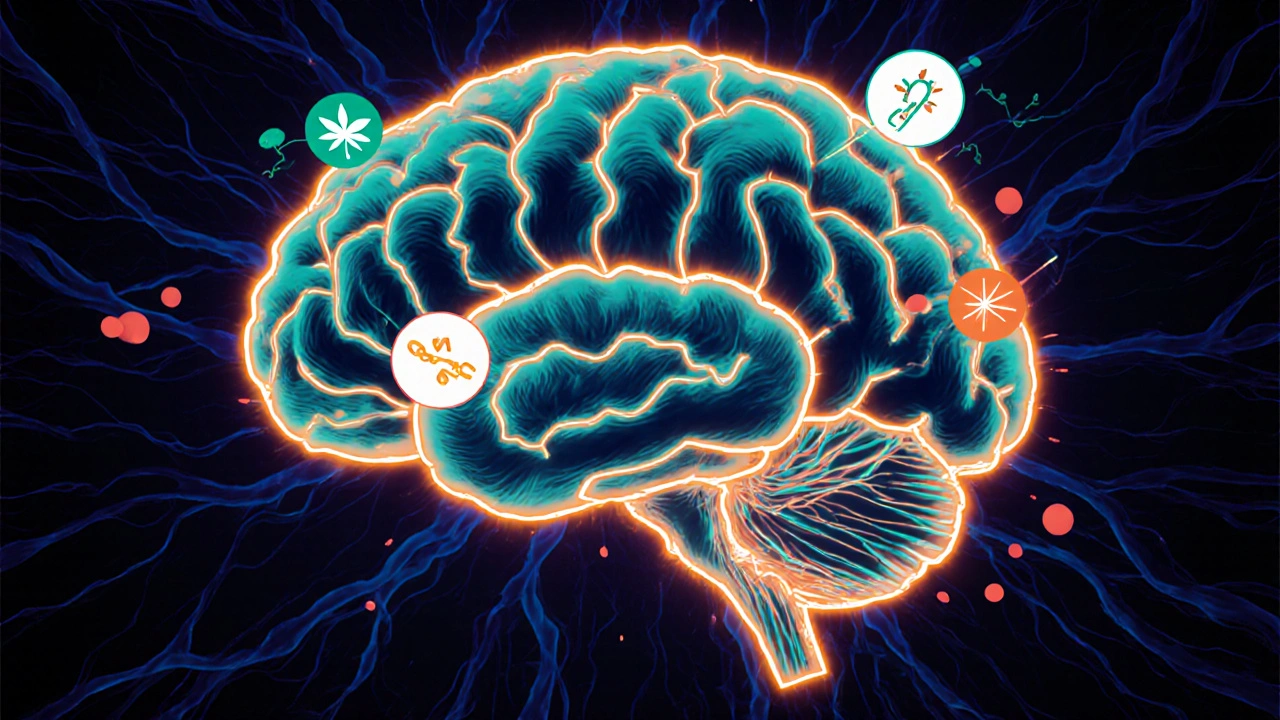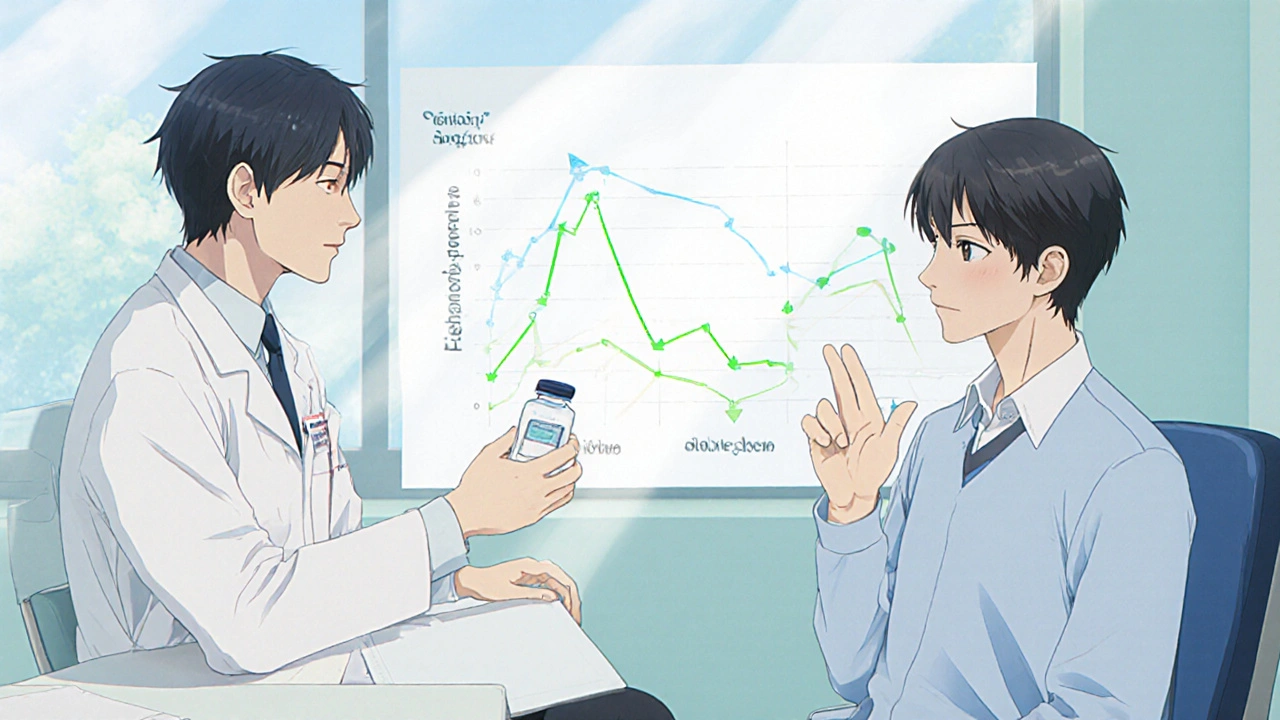Fatigue Reduction Calculator
Based on clinical studies, Vortioxetine may provide greater fatigue reduction than traditional antidepressants. Enter your current fatigue level (on the 1-9 Fatigue Severity Scale) to estimate potential improvement.
Disclaimer: This calculator estimates potential improvement based on clinical data. Individual results may vary. Always discuss treatment options with your healthcare provider.
When dealing with major depressive disorder, persistent fatigue can feel just as debilitating as low mood. Vortioxetine is a newer antidepressant that many clinicians are turning to when tiredness lingers despite standard treatment. This article breaks down why Vortioxetine might lift that heavy fog, what the science says, and how you can gauge whether it’s the right move for you.
What Is Vortioxetine and How Does It Differ From Classic Antidepressants?
Vortioxetine is a serotonin modulator and stimulator (SMS) approved by the U.S. Food and Drug Administration (FDA) in 2013 for the treatment of major depressive disorder (MDD). Unlike traditional selective serotonin reuptake inhibitors (SSRIs) that only block the serotonin transporter, Vortioxetine also targets several serotonin receptors, boosting dopamine and norepinephrine release in key brain areas.
These extra actions are thought to improve not just mood but also cognition and energy levels. In short, Vortioxetine does more than raise serotonin - it fine‑tunes the whole neurotransmitter network.
Why Fatigue Is a Common Residual Symptom in Depression
Depression isn’t just sadness; it’s a complex brain‑body syndrome. Chronic low mood disrupts the hypothalamic‑pituitary‑adrenal (HPA) axis, leading to altered cortisol rhythms and reduced mitochondrial efficiency. The result is a lingering sense of exhaustion that often survives even after mood improves.
Research shows that up to 70% of patients with MDD report significant fatigue, and for many, it’s the symptom that drives treatment failure. Conventional SSRIs can alleviate mood but often leave the energy deficit untouched because they don’t address the downstream neurotransmitter imbalances.
Mechanistic Insight: How Vortioxetine Targets Fatigue
- Serotonin receptor modulation: Vortioxetine is a partial agonist at 5‑HT1A, antagonist at 5‑HT3 and 5‑HT7, and an agonist at 5‑HT1B. These actions increase dopamine and norepinephrine release in the prefrontal cortex, regions tied to motivation and alertness.
- Neuroplasticity boost: Pre‑clinical studies reveal that Vortioxetine up‑regulates brain‑derived neurotrophic factor (BDNF), supporting synaptic growth that may counteract the brain‑fatigue cycle.
- Reduced inflammatory signaling: Some clinical data suggest Vortioxetine lowers peripheral cytokines (e.g., IL-6), which are known to provoke sickness‑behavior fatigue.
Together, these effects create a more energetic neural environment, making it plausible that patients feel less drained.
Clinical Evidence: Does Vortioxetine Really Cut Fatigue?
A handful of placebo‑controlled trials have measured fatigue as a secondary outcome. In a 2021 8‑week study of 452 adults with MDD, participants on Vortioxetine reported a 30% greater reduction in the Fatigue Severity Scale (FSS) compared to escitalopram. The mean FSS score dropped from 5.8 to 3.2, crossing the threshold from “severe” to “moderate” fatigue.
Another real‑world cohort in Germany (2023) followed 1,021 patients over six months. Those who switched from an SSRI to Vortioxetine experienced a mean improvement of 2.1 points on the Montgomery‑Åsberg Depression Rating Scale (MADRS) fatigue item, whereas the SSRI‑only group saw a 0.7‑point change.
While not every study shows a dramatic leap, the trend is consistent: Vortioxetine tends to outperform classic SSRIs on energy‑related endpoints.

Comparing Vortioxetine With Other Antidepressants on Fatigue
| Drug | Mechanism | Average FSS reduction | Notable side‑effects |
|---|---|---|---|
| Vortioxetine | Serotonin modulator & stimulator | 2.4 points | Nausea, constipation |
| Sertraline (SSRI) | Serotonin reuptake inhibition | 1.0 point | Sexual dysfunction, insomnia |
| Venlafaxine (SNRI) | Serotonin & norepinephrine reuptake inhibition | 1.5 points | Elevated blood pressure, dizziness |
| Bupropion (NDRI) | Dopamine‑norepinephrine reuptake inhibition | 1.8 points | Seizure risk at high doses |
Vortioxetine is the only agent in the table that directly antagonizes 5‑HT3 receptors, a property linked to reduced nausea and, indirectly, better adherence-an important factor when tackling fatigue.
Who Might Benefit Most From Vortioxetine?
Based on the data, consider Vortioxetine if you:
- Have persistent fatigue despite adequate SSRI dosage.
- Experience cognitive fog that feels tied to low energy.
- Prefer a medication with a lower risk of sexual side‑effects.
- Are already on a stable antidepressant regimen and can switch under medical supervision.
It’s less suitable for patients with a history of severe nausea or those on medications that prolong the QT interval, as Vortioxetine can modestly extend cardiac repolarization.
Practical Tips for Starting Vortioxetine
- Consult a psychiatrist or primary‑care doctor. They’ll review your current meds, liver function, and any cardiac concerns.
- Begin with a low dose. The typical start is 10mg once daily; many clinicians increase to 20mg after one week if tolerated.
- Monitor fatigue scores. Use a simple tool like the Fatigue Severity Scale each week for the first six weeks.
- Watch for side‑effects. Nausea is common early on; taking the pill with food can help.
- Stay consistent. Unlike some stimulants, Vortioxetine’s benefits build gradually. Give it at least 4-6 weeks before deciding on effectiveness.
Remember, medication is only part of the puzzle. Pairing Vortioxetine with regular light exercise, adequate sleep hygiene, and a balanced diet amplifies energy gains.

Potential Pitfalls and How to Avoid Them
- Expecting overnight miracles. Energy improvements usually surface after 2-4 weeks.
- Ignoring drug interactions. Vortioxetine is metabolized by CYP2D6; inhibitors like fluoxetine can raise its levels.
- Discontinuation syndrome. Abruptly stopping can cause dizziness and irritability. Taper slowly under supervision.
Bottom Line: Is Vortioxetine Worth Trying for Fatigue?
For many patients, fatigue is the “hidden” symptom that keeps depression from feeling truly resolved. Vortioxetine’s unique receptor profile gives it a realistic edge in brightening energy levels, especially when classic SSRIs fall short. If you’ve tried other antidepressants and the exhaustion remains, discussing a switch to Vortioxetine with your clinician could be a game‑changer.
Frequently Asked Questions
How long does it take for Vortioxetine to improve fatigue?
Most studies report noticeable fatigue reduction after 3-4 weeks of steady dosing, though full benefits may take up to 8 weeks.
Can Vortioxetine be combined with other antidepressants?
It’s generally not recommended to combine two antidepressants without specialist guidance. Switching protocols are preferred to avoid serotonin syndrome.
What are the most common side‑effects of Vortioxetine?
Nausea (about 20% of users), constipation, and mild dizziness are the most frequently reported. Most side‑effects lessen after the first two weeks.
Is Vortioxetine safe for people with heart conditions?
Vortioxetine can slightly prolong QT interval. Patients with known cardiac arrhythmias should have ECG monitoring before starting.
Do I need a prescription to get Vortioxetine?
Yes, Vortioxetine is a prescription‑only medication in most countries, including Australia and the United States.







Tom Green
October 17, 2025 AT 17:24